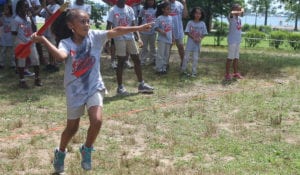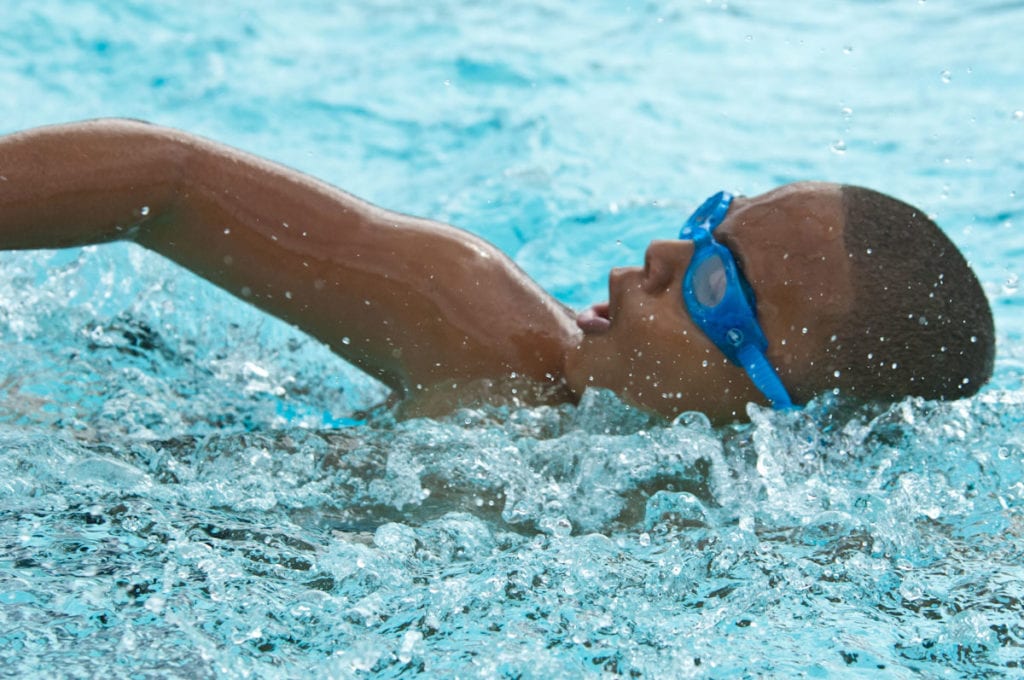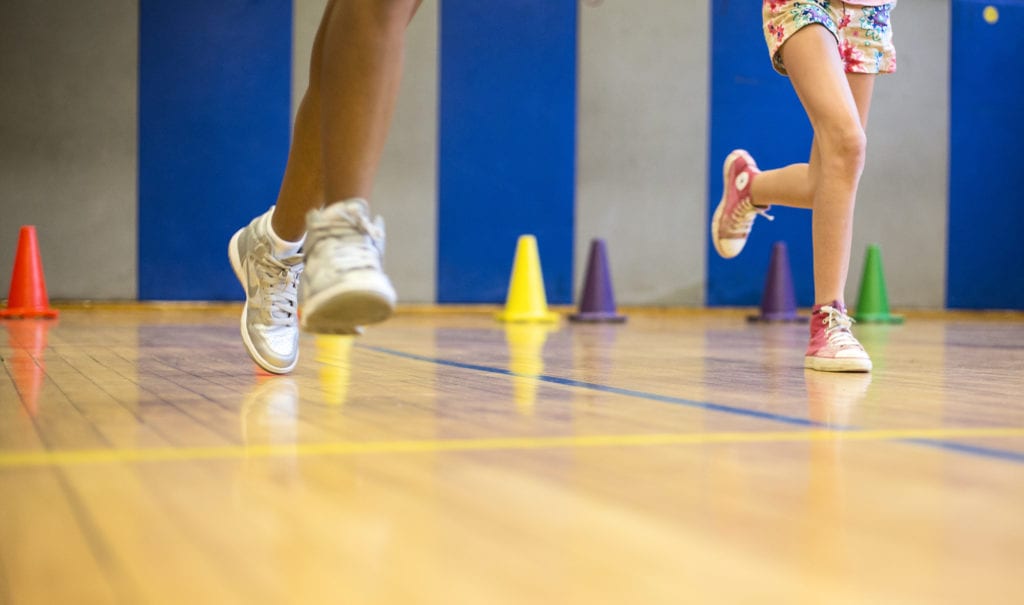For years, Rose Gelrod, the Lead Health and Wellness Specialist at DREAM Charter School in New York City, had a vision for what health and wellness could look like in the school setting. She believed that the perfect program would fully integrate physical activity and physical education into a comprehensive academic and wellness curriculum.
At DREAM, she has worked to implement this vision. Born out of Harlem RBI, an after-school baseball, education, and wellness program for East Harlem youth, DREAM Charter School holds health and wellness as central components of its educational mission.
Through the Alliance for a Healthier Generation’s Healthy Schools Program, she learned of Let’s Move! Active Schools and was able to enroll DREAM in the First Lady’s program, which had been on Gelrod’s radar since its inception. For Gelrod, deciding to join Let’s Move! Active Schools was a “no brainer.”
“We’re trying to be one of the best schools in the world for our scholars and that means being a part of the best endeavors, of which Let’s Move! Active Schools is one, if not the preeminent one,” she explained.
Becoming More Active
Based on the Center for Disease Control’s comprehensive school health model, DREAM’s health and wellness program seeks to embed an active mindset into the very fabric of the school—sneakers are a required component of the school uniform so that, Gelrod explained, “children are prepared to be active every day.”
DREAM was one of the few schools in New York to meet state mandates for minutes of physical education. In an era of high stakes testing, “it’s not easy,” said Gelrod.
“Our students have the same needs as everyone else—they’re trying to learn to read and write, and do well on state tests.”
Gelrod credits the “bravery” and commitment of the school’s leadership to build a comprehensive and integrated wellness and activity culture.
Partnerships
In developing an active culture, Gelrod has expanded beyond the parameters of normal physical education classes. To complement the in-school physical education program, she has sought out partnerships with programs across the city to expose DREAM’s students to new forms of physical activity and outdoor education. Each grade level learns a new type of sport or activity, including track, rugby, and street squash. Particularly important, Gelrod believes, are the free swim classes that second graders receive.
“What we find is that in underserved communities, swimming and biking opportunities are lacking,” she said. “We can’t let our scholars grow up without knowing how to swim or bike safely.”
Though DREAM is currently co-housed in a New York Department of Education building with another school, a new school building is under construction. In this new building, Gelrod looks forward to the addition of bike racks to facilitate the creation of a biking education program.
In the Classroom
In addition to regularly scheduled physical education, all classroom teachers take 10-minute movement breaks during the day. With Gelrod’s support, teachers developed a litany of creative activities to refocus and reenergize their students during these periods.
“Some are just movement for the sake of movement,” she explained, “but some are content driven. If they’re studying math, they’ll get up and move to a math song that’s related to the material.”
Using information gleaned from the BrainGym program, students move in ways that specifically stimulate areas of the brain related to upcoming classroom topics.
Recess
Active education extends beyond the classroom to recess. Though the process was fraught with challenges—building construction, space constraints, ambient noise, and inclement weather are only the tip of the iceberg—and further compounded by the difficulties of scheduling two separate schools within the same building, Gelrod and her staff have built a program they are proud of through creativity and dedication.
Recess at DREAM is both active and educational—Gelrod and her team run a “facilitated, unstructured recess,” where kids are encouraged to be active using the setups and equipment available, but are left to their own imaginations to construct games and activities.
“Our scholars aren’t let out of the house to just go play,” explained Gelrod. “There’s too much crime, and there are too many parents working.”
Recess, she believes, is the one time when “children have an opportunity to play on their own for a little while. These are the most structured, overscheduled children in generations, and [through unstructured recess], they have time to learn how to self-organize and self-regulate. These are really important adult skills.”
Even when inclement weather prevents students from going outside, Gelrod and her staff creatively repurpose indoor spaces, such as the auditorium, for recess.
“The aisles become a racing track, the stage becomes a place for hula hoop, and the little corners in the back become areas for jump rope,” she said. “We never tell our scholars to sit, be quiet, and watch a movie.”
Summer
Gelrod is particularly proud of DREAM’s summer program, first instituted last year. Students spend the morning in the classroom and then spend three hours outside. Twice a week, they travel to Orchard Beach, where they have the unique opportunity to escape the pollution and congestion of the city to hike, play rugby, and run track in an outdoor environment most would never otherwise experience.
“The students transform—they get out of the city, away from the noise, away from the crowds, away from the tall buildings, and they become the stress-free, healthy children we know they can be. Even the non-athletes just love to move.”
As always, Gelrod is looking for new opportunities to integrate academic subjects with physical activity, and she hopes to integrate lessons about art and nature during the hiking component of the program.
Moving More Means…
At DREAM, physical education and physical activity have exposed students to new concepts, ideas, and ways to learn. The school’s active wellness council, which includes both students and staff, is continuously proposing ideas for integrated education.
For example, DREAM collaborate with the New York Restoration Project to provide DREAM students with their own garden plot during the school year and the summer. In conjunction with the annual strawberry-picking wellness trip for kindergartners, first, and second graders, these programs provide both physical activity and an opportunity to teach—“Kids actually learn how food grows, rather than just seeing it on supermarket shelves,” explained Gelrod.
The all-school wellness trip is one of Gelrod’s favorite programs and has helped integrate families into the school community. “In the winter, we have an all school-ice skating trip, which is one of the few outdoor physical activities available to New York City folks in the winter,” she said. “Our families get on the ice, and we all fall down, and by the end we get better. It’s really, really fun.”
Expanded physical activity offerings have shifted attitudes among teachers, students, and families. Students and families across the school share their stories of getting active and eating healthy. Teachers are requesting even more opportunities to get their students moving. In fact, when scheduling conflicts prevented kindergarteners from participating in the fall track program, Gelrod reported that every kindergarten teacher asked her how to reinstate it and offered to advocate for the program. “The teachers are pushing me for it, rather than the other way around. That’s really powerful evidence for me, because the teachers’ mindsets have changed towards physical activity,” said Gelrod. “We’re developing a culture of health.”
Making DREAM an active environment for kids has been a whole-school effort. For Gelrod, the commitment of her colleagues has been critical.
“I’m really proud of working with a group of adults who believe in this like I do,” she said. “Because it’s not just me! It takes a village to raise a child, and we couldn’t be a health and wellness school unless everyone buys in—it’s all of us! It’s my job to find out what’s out there and how to get it, but leadership has to say yes, and the staff have to execute. And I am happy to say that they do. We’re all on the same team.”
Words to Move By
- Redefine what an activity space is. Be creative—figure out how to use every space you walk into as a space to move!
- Partner with your community. Be persistent… keep calling prospective partners!
- Get your families on board. Get them excited about your active journey by including them in the process. Make them members of your wellness council. Give them simple activities to do at home to be healthy!



